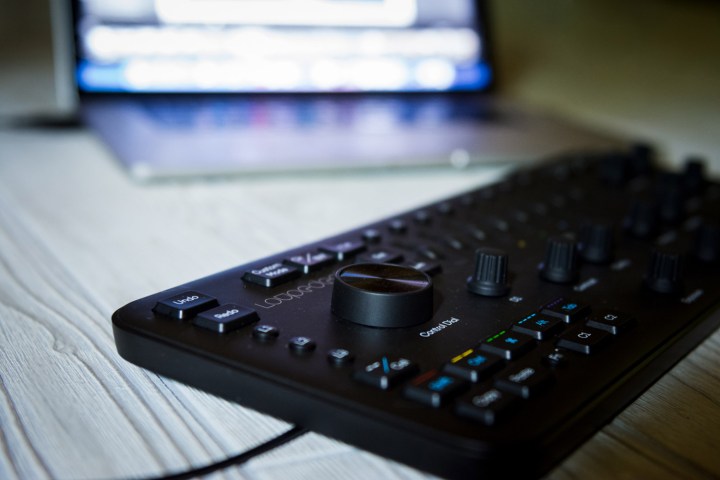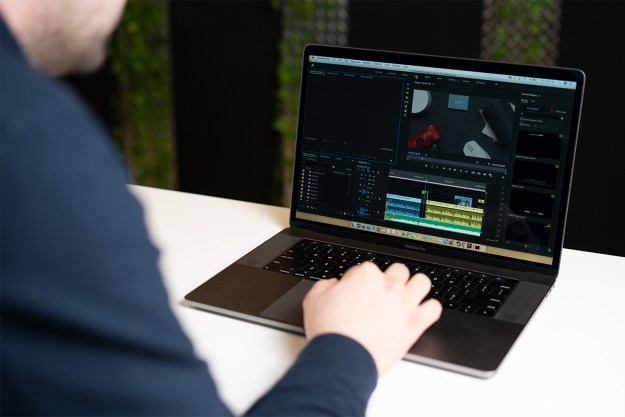
Loupedeck, the hands-on photo editing “keyboard” is no longer just for photos. On Wednesday, September 19, Loupedeck announced Adobe Premiere Pro CC compatibility with the controls and dials of the Loupedeck+.
About the size of a standard keyboard, the Loupedeck+ replaces keys with dedicated dials, wheels, and buttons for editing images, and now videos. Loupedeck was originally designed specifically for Adobe Lightroom, with dedicated physical controls for a majority of the slider controls inside the popular photo editing software. Those same controls can now be used inside Premiere Pro with an update to the Loupedeck+ software.
The color controls at the top of the Loupedeck+ for adjusting the HSL (hue, saturation, and luminance) panel in Lightroom become color-grading tools for Premiere Pro. The already-labeled color tools don’t need to be adjusted to adapt to the video editor, but other tools can be custom configured to better fit the workflow for video, Loupedeck says. The custom control scheme can also be saved and exported to another computer.
The update to the software that customizes those controls also allows video editors to toggle between different Look Up Tables (LUTs) to save time editing, Loupedeck says. The controls on the console can also be set to navigate through the timeline, trim content, and adjust clips. Like in Lightroom, buttons on the Loupedeck can also be assigned to keyboard shortcuts.
While the original Loupedeck was designed for Lightroom, the Loupedeck+ made a few enhancements to the controls and also expanded compatibility with Skylum Aurora, and soon, Capture One. Premiere Pro is the first video compatibility for the Loupedeck.
“Our mission is to keep on improving the editing workflow, so it’s only fitting our next step is in the video editing space,” Mikko Kesti, founder and CEO of Loupedeck, said in a press release. “Just like we developed the Loupedeck+ exclusively from community feedback, we felt it was imperative to listen to what our users had to say and make the device’s functionality even more well-rounded, providing all the same editing functions that photographers have at their fingertips to videographers. Users can now count on Loupedeck+’s intuitive design and user-friendly approach to enhance their video editing quality and increase their output. Our ongoing partnership with Adobe made introducing these new capabilities with its Premiere Pro CC suite an easy decision.”
The company says Premiere Pro is just the start of the video capabilities — additional software compatibility in the video space is expected to be announced later this year. While the software has changed, the hardware has not — the Loupedeck+ is already available, retailing for about $230.
Updated on Sept. 19 to correct Skylum compatibility.
Editors' Recommendations
- Here’s how to get the best performance in Adobe Premiere Pro
- Premiere Pro has a new breakthrough feature to speed up editing
- You can now export videos 10x faster in Adobe Premiere Pro
- ReelSteady makes GoPro Player ‘reel’ useful for filmmakers
- The best video-editing software for 2021




